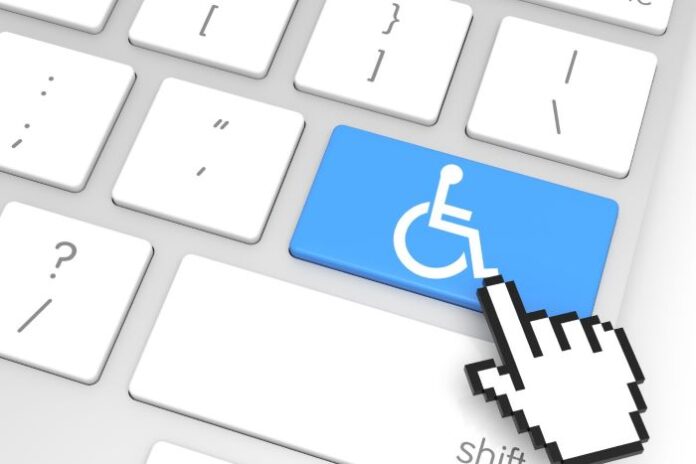Yes, you can get sued for having an inaccessible website. That’s not why you need to care. Let go of the idea that making your website accessible is just a “nice to have” or a checkbox to avoid a lawsuit. Not only is that notion incorrect, but it’s also overshadowing the real purpose behind the regulations. Here we’ll delve into the destructive impact of inaccessibility.
The Truth Behind the Rules
WHO data shows that nearly 15% of the world’s population experience some form of disability. That’s more than a billion people who might be barred from using your website because you made it inaccessible. Websites contain hidden barriers that simply don’t occur to many people, and that’s why these regulations exist. How would you know that image alt text was missing unless you listened to your website being read through a screen reader?
Each regulation comes with a purpose – a real human – behind it who requires specific accommodations. These aren’t arbitrary changes you need to make; they’re hugely impactful. Not making your site accessible means you’re telling a billion people that you just are not interested in producing content for them.
Not convinced yet? Well, would $490 billion change your mind? That’s the reported disposable income of adults with disabilities in the United States alone. Suppose you have something to sell, and your site is inaccessible. Chances are anyone who encounters a barrier will go somewhere else rather than deal with the frustrations your website causes.
Disabilities are not just visual, auditory, or mobility-related either. They cover a vast range of complex needs, and each person’s requirements are different. That, combined with people who have temporary disabilities, such as when someone breaks their arm and is wearing a cast, means that a one-size-fits-all website shouldn’t exist. The experience needs to be customizable so that each visitor can tailor the site to fit their unique needs.
Experiencing Inaccessibility
Picture it – you’re in an empty airport. You go to check-in, and there’s no line, so you start to walk up to the counter only to find it blocked. Instead, you are ushered to a maze of ropes, and you need to wheel your heavy luggage through the twists and turns to get to that very same spot. What was the point? That’s to some small degree, how inaccessibility feels.
There is an easier way, and it’s clear to the disabled community what needs to happen. Regulations like WCAG 2.0 and ADA guidelines exist to make things accessible, and often they are ignored. What’s the point in that? Like the airport maze, things are needlessly complicated.
The experience is beyond alienating; it’s unacceptable. It’s also almost entirely preventable. Solutions exist to give your site a feature boost so that users can make the customizations they need. At the suggestion of a single user, my company, UserWay, put together a Dyslexia-friendly font. We know that for every person who speaks up, there are thousands more who abandon inaccessible websites for more useful ones.
As the tech-savvy population ages, you’ll begin to see this happen more frequently. People get frustrated, but they also know there is a lot of competition for their digital attention. It’s only a matter of searching to find a competitor who takes accessibility seriously, and they’ll invest their time and money on experiences that suit them better. Be that experience now before it’s too late.
Accessibility & Inclusion
Inclusion comes in many forms. Putting an inclusive and accessible site together takes thought and planning, and often a review of anything you’ve already published. It also requires you to broaden your definition of inclusion. Alienating people when you want to welcome them is an all too common occurrence in modern society.
Recently, many people have experienced the shock and shame of their historical content being deemed “unacceptable.” This can come from the use of a term that creates bias, such as blacklist, from user-generated content that contains hate speech, the list goes on. The point is, the tide is shifting. Do you know what was published on your corporate blog in 2009? Would it still be acceptable today? This is a component of the destructive impact of inaccessibility.
With these issues swirling, things like content moderation become more critical than ever. The time and effort it takes to comb through every web page and comment searching for offensive or biased content has been replaced with an AI content moderator like UserWay’s that does the hard work automatically. By enabling a moderator and reviewing the list of potential issues, you can control your public face and ensure you are creating an inclusive experience for your audience.
Correcting Your Course
It’s not that accessibility is easy. It’s that it is necessary. If you went through the trouble of creating a website, you have a message, product, event, idea, or something else that you want to communicate. Making even a few of the people who are interested in your content unable to access it is illogical.
Whether you are building a new site or grappling with updating your current site, start thinking of it as creating a better user experience and not meeting some arbitrary requirement. The success of your site depends on it, and on the flipside there is a destructive impact of inaccessibility.
















Comments are closed.